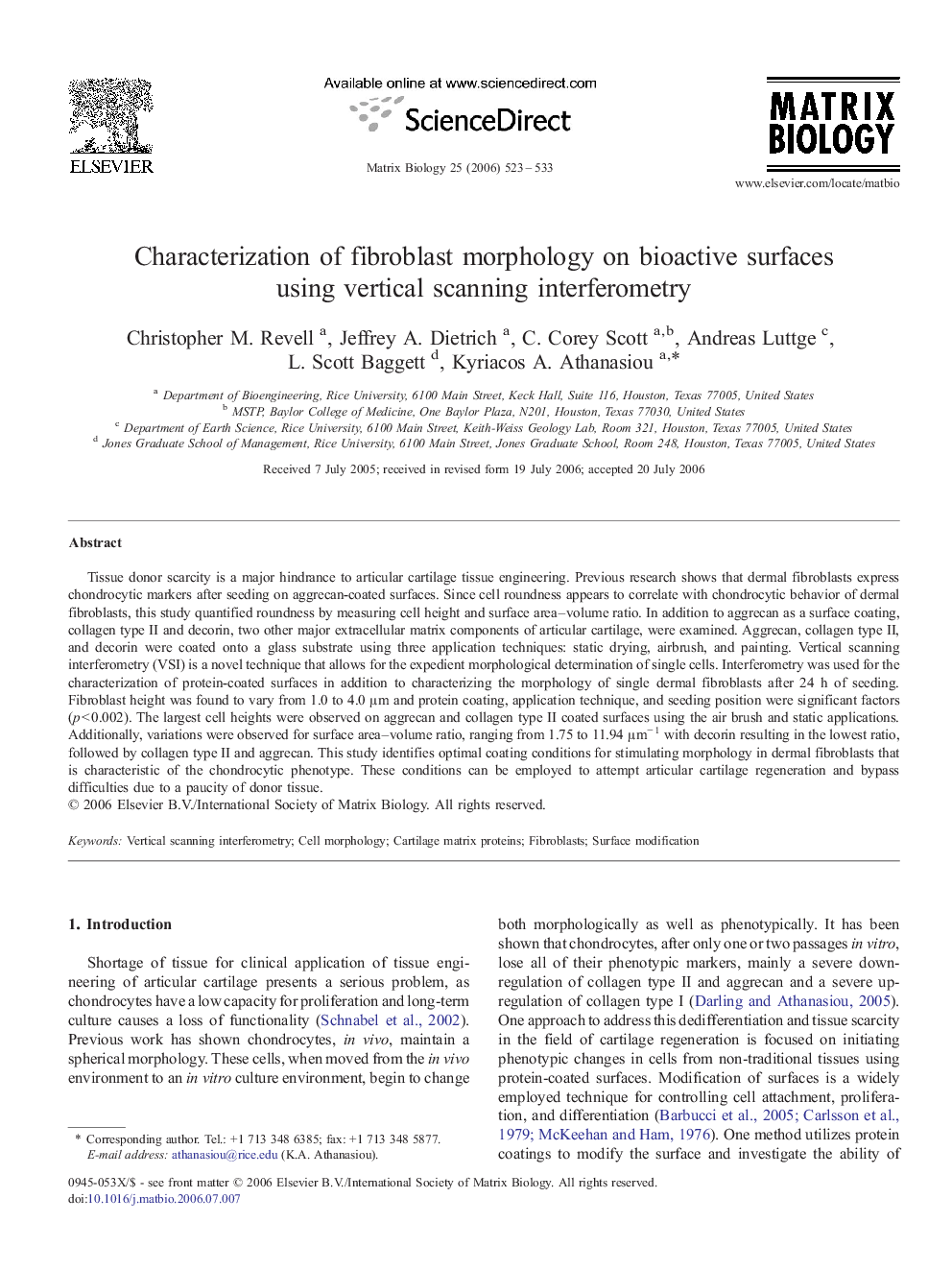| Article ID | Journal | Published Year | Pages | File Type |
|---|---|---|---|---|
| 2145475 | Matrix Biology | 2006 | 11 Pages |
Tissue donor scarcity is a major hindrance to articular cartilage tissue engineering. Previous research shows that dermal fibroblasts express chondrocytic markers after seeding on aggrecan-coated surfaces. Since cell roundness appears to correlate with chondrocytic behavior of dermal fibroblasts, this study quantified roundness by measuring cell height and surface area–volume ratio. In addition to aggrecan as a surface coating, collagen type II and decorin, two other major extracellular matrix components of articular cartilage, were examined. Aggrecan, collagen type II, and decorin were coated onto a glass substrate using three application techniques: static drying, airbrush, and painting. Vertical scanning interferometry (VSI) is a novel technique that allows for the expedient morphological determination of single cells. Interferometry was used for the characterization of protein-coated surfaces in addition to characterizing the morphology of single dermal fibroblasts after 24 h of seeding. Fibroblast height was found to vary from 1.0 to 4.0 μm and protein coating, application technique, and seeding position were significant factors (p < 0.002). The largest cell heights were observed on aggrecan and collagen type II coated surfaces using the air brush and static applications. Additionally, variations were observed for surface area–volume ratio, ranging from 1.75 to 11.94 μm− 1 with decorin resulting in the lowest ratio, followed by collagen type II and aggrecan. This study identifies optimal coating conditions for stimulating morphology in dermal fibroblasts that is characteristic of the chondrocytic phenotype. These conditions can be employed to attempt articular cartilage regeneration and bypass difficulties due to a paucity of donor tissue.
